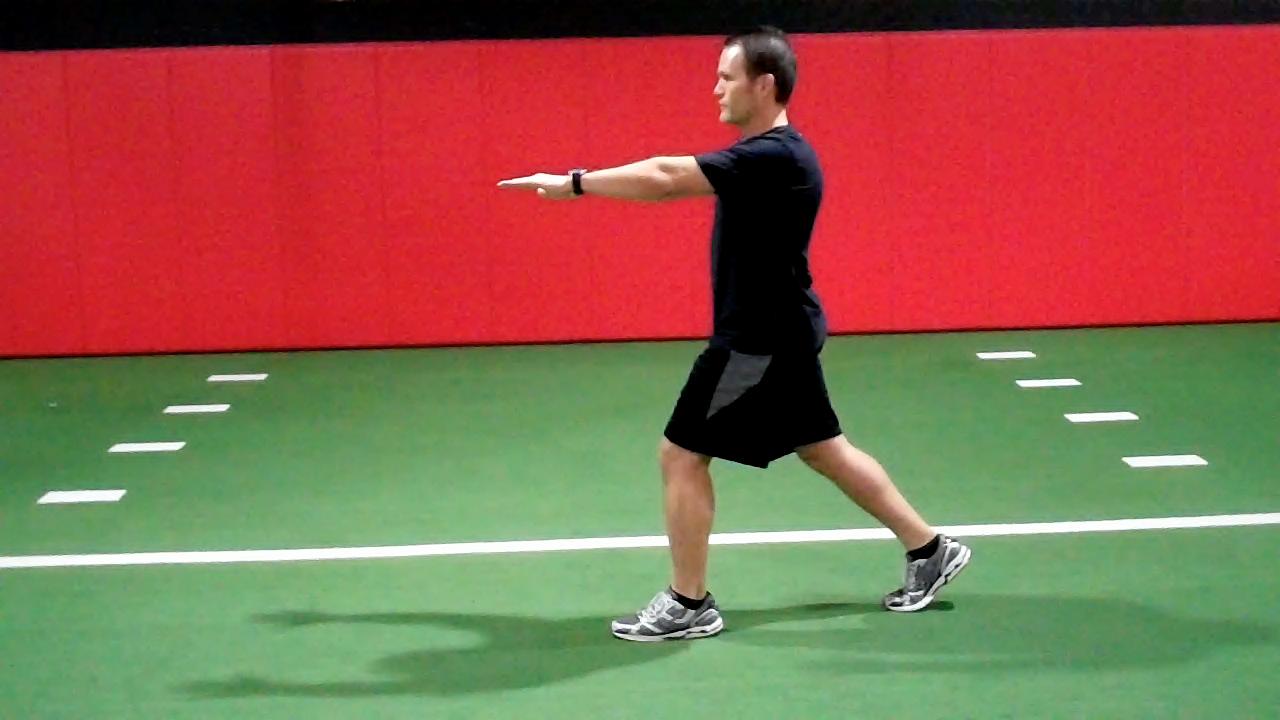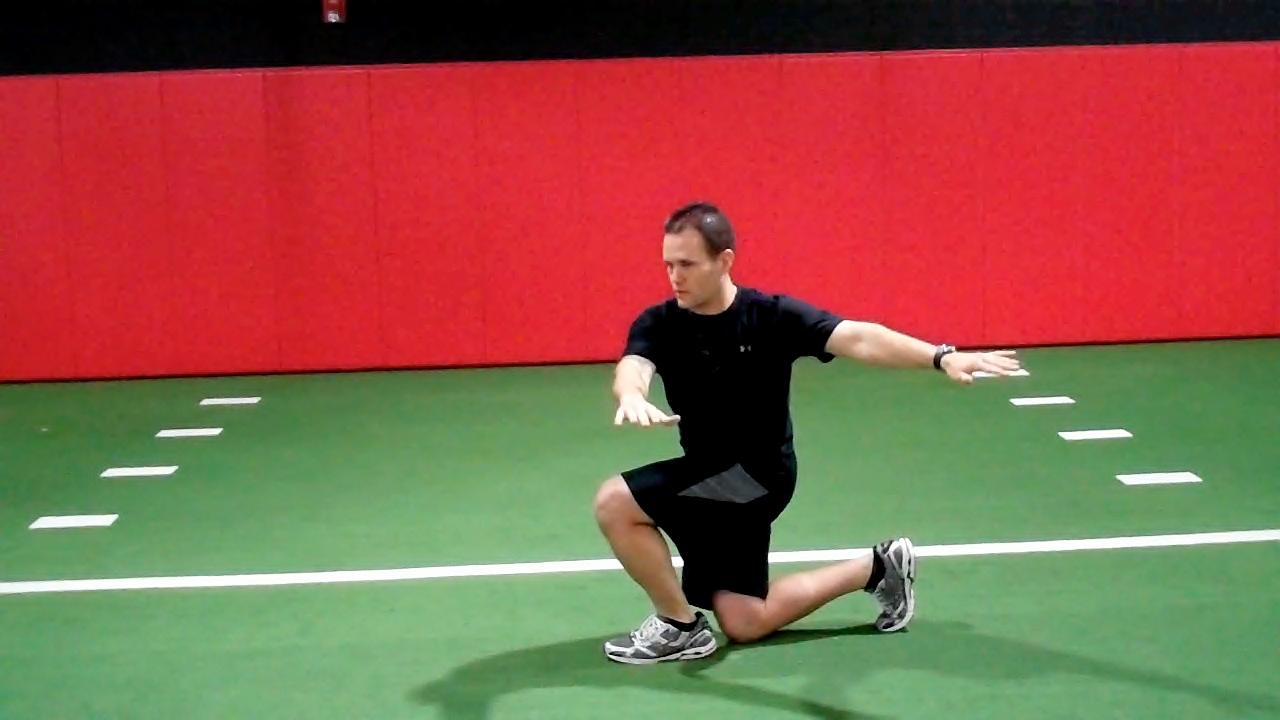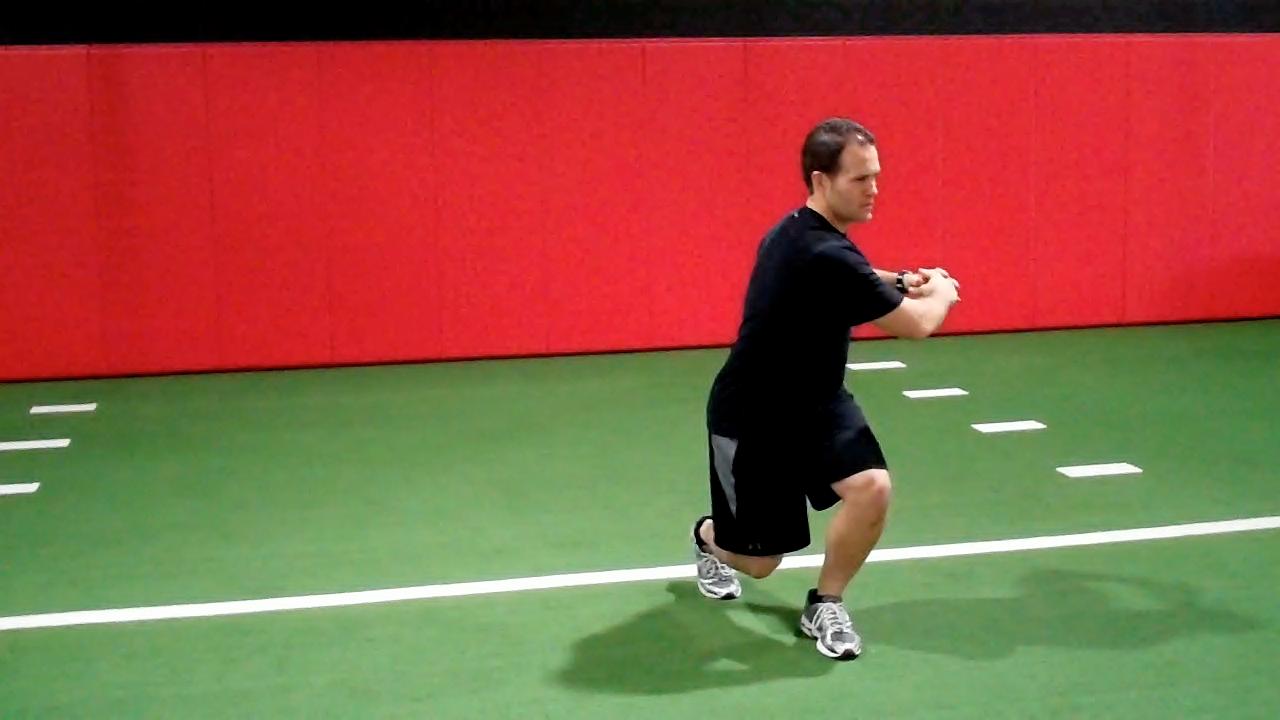![E-News-Column_2[1] E-News-Column_2[1]](https://cms-static.wehaacdn.com/fit--pro-com/images/E-News-Column_2-1-.2522.0.0.jpg)
| From Brian: Unfortunately, many clients struggle to keep the knee in line with the foot, and the knee often caves inward. Even with verbal, visual and tactile cues, they may still struggle to master the proper form due to flexibility and strength imbalances. Today, I want to talk about a simple corrective exercise I use to clean up lunges in the sagittal plane. See 'Related Resources' below for past Functionally Fits and other exercises and training tips. |
Execution:
 |  | |
| Begin standing upright with both feet facing straight ahead (the distance between the feet should equate to where the knee of the trail leg is at or near the lead heel). Keep in mind that the smaller the distance the more compressive force on the patello-femoral joint. | Next slowly lower down while simultaneously rotating the upper torso and arms to the same side as the lead leg. Pause at the bottom for one to two seconds (should be pain free range of motion) and then return to upright.
|
Repeat for 8-15 repetitions. Switch lead legs and repeat on the other side. Perform 2-3 sets for each leg.
Application:
Many clients you see will exhibit increased adduction/internal rotation at the hip and valgus at the knee.
Provided there is not a significant ankle mobility issue present creating excessive rotation at the knee joint, this exercise is very effective in encouraging gluteus medius activation, reducing the valgus collapse that is common in many clients and promoting increased hip stability.
Additional Notes:
I strongly encourage you to stop the lunge once the client loses form and focus in on the range they can perform well until they learn the proper neuromuscular patterning. Consider longer isometric holds during the range of motion to facilitate better stability in weaker parts of the motion.
 |  |
If you are seeking advanced progressions, consider the following:
- Forward lunge step and return with rotation (same leg)
- Forward lunge step and return with rotation (alternate legs)
- Walking lunge with rotation
- Any of the prior three holding a medicine ball
- Split squat version with rotation using a box or BOSU
- Suspended version with rotation using the TRX/Jungle Gym
Keep in mind the end goal is upright and in line movement that is free of pain and flaws. Do not progress the difficulty until they exhibit great form with every repetition at each level. This exercise can be used as part of your warm-up or regular strengthening program.
Brian Schiff, PT, CSCS (www.brianschiff.com) is a licensed physical therapist,respected author and fitness professional. He became a Certified Strength and ConditioningSpecialist (CSCS) in 1998. Currently, he serves as the supervisor at theAthletic Performance Center in Raleigh, NC. Brian presents nationally atseveral professional conferences and seminars on injury prevention, rehab andsport-specific training.
















